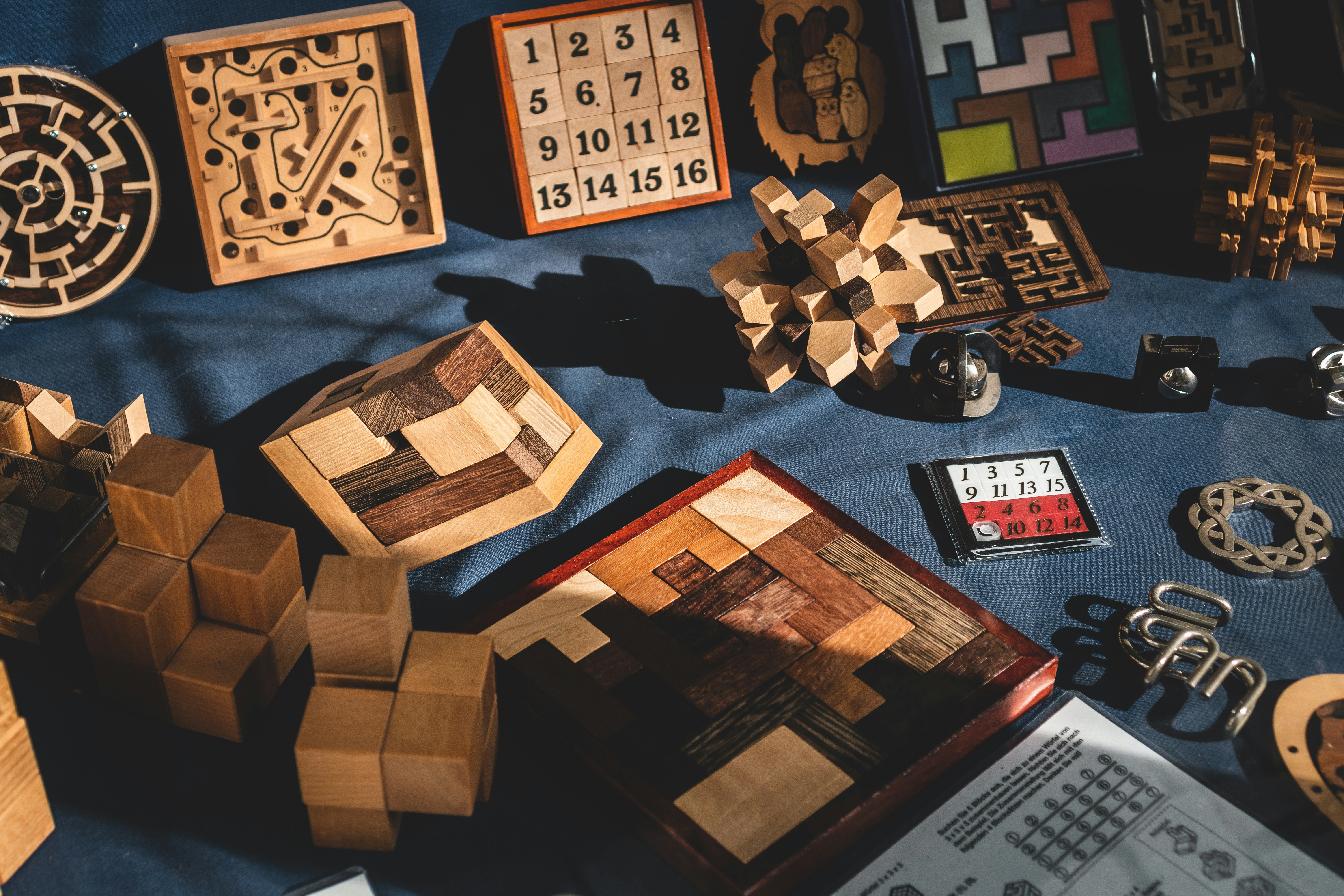Puzzle Games and the Power of Thinking: Why We Love to Solve
From sliding tiles and matching colors to solving complex logic riddles, puzzle games have been a staple of gaming since the very beginning. Simple in concept but often deceptively challenging, these games tap into our love for problem-solving, our desire for mastery, and our craving for that satisfying “aha!” moment.
In an industry filled with fast-paced shooters and cinematic open-worlds, puzzle games remain quietly powerful — engaging the brain, not the trigger finger. In this article, we explore why puzzle games are so universally appealing, the different types that exist, and how they’ve evolved from paper to pixels.
1. The Universal Appeal of Puzzle Games
Unlike many genres, puzzle games transcend age, skill level, and platform. Whether you're 6 or 60, a casual mobile user or a hardcore PC gamer, puzzle games have something to offer.
Why we love them :
- Instant gratification : Quick challenges with immediate feedback
- Cognitive satisfaction : Exercise for memory, logic, pattern recognition
- Portable and accessible : Perfect for mobile or short browser sessions
- Stress relief : Calm, focused play that can be meditative
Many players find puzzle games relaxing yet mentally stimulating — a rare combination in interactive media.
2. Popular Types of Puzzle Games
Puzzle games come in many shapes and sizes. Here are some of the most well-known types:
a. Match-3 Games
The most commercially successful puzzle subgenre, known for colorful visuals and satisfying combo chains.
Examples :
- Candy Crush Saga
- Bejeweled
- Homescapes
These games focus on swapping tiles to form rows of three or more, often with timed goals or move limits.
b. Logic and Brain Teasers
These challenge players with rules-based problems — Sudoku, riddles, number games, or pathfinding puzzles.
Examples :
- The Room
- Professor Layton
- Human Resource Machine
They test deduction, reasoning, and lateral thinking.
c. Physics-Based Puzzles
Players must manipulate objects or environments using realistic (or exaggerated) physics.
Examples :
- Angry Birds
- Cut the Rope
- World of Goo
These games are tactile and satisfying, rewarding experimentation and observation.
d. Word and Language Games
Puzzle games that deal with vocabulary, spelling, or language rules.
Examples :
- Wordle
- Scrabble GO
- Words With Friends
They’re especially popular among older players and language learners.
e. Spatial and Pattern Recognition
These rely on spatial reasoning, symmetry, and visual recognition.
Examples :
- Tetris
- Monument Valley
- Linelight
Some of the most iconic puzzle games fall into this category, especially on mobile and H5 platforms.
3. Puzzle Games and the Brain
Numerous studies have shown that playing puzzle games offers cognitive benefits, including:
- Improved memory and short-term recall
- Enhanced problem-solving skills
- Better spatial reasoning
- Increased patience and persistence
Some puzzle games are even used in therapy or educational settings to support mental agility and delay age-related cognitive decline.
4. The Rise of Puzzle Games in Mobile and Web
Puzzle games were among the first genres to explode on mobile and HTML5 web platforms due to their:
- Low hardware requirements
- Touch-friendly interfaces
- Short session lengths
Many successful H5 and mobile developers focus exclusively on puzzle formats because of their mass appeal and relatively low production cost.
Websites like Poki , CrazyGames , and Coolmath Games feature hundreds of popular puzzle games that run seamlessly in browsers, especially for casual audiences.
5. Puzzle Games as a Design Philosophy
Puzzle mechanics are also increasingly being blended into other genres , such as:
- Adventure games : Like Zelda or Portal , where puzzles unlock progression
- Platformers : Like Braid , mixing time mechanics with traditional jumping
- Horror games : Like Resident Evil , using item-based riddles to increase tension
Even non-puzzle games often use mini-puzzles to enhance pacing and reward exploration.
6. Monetization and Business Models
Puzzle games monetize in several ways:
- Ad-supported models : Popular in free web and mobile versions
- In-app purchases : For hints, extra lives, or cosmetic items
- Premium sales : Narrative puzzle games like The Witness or The Talos Principle
- Gamified education : Language learning, math drills, and brain training tools
Because of their accessibility and viral potential, puzzle games often enjoy high user acquisition rates and strong casual retention.
7. Challenges for Puzzle Game Developers
While puzzle games are approachable, developing one that stands out is difficult:
- Keeping difficulty balanced (not too easy, not too frustrating)
- Avoiding repetitiveness
- Creating a visual identity for simple mechanics
- Standing out in a crowded market
Innovative mechanics, minimalist design, and strong level design are often what separates the average from the exceptional.
8. The Future of Puzzle Games
Looking forward, puzzle games are evolving in new ways:
- Narrative-driven puzzles : Games like Outer Wilds or Return of the Obra Dinn
- Procedural generation : Infinite unique puzzles for endless replayability
- Multiplayer puzzles : Cooperative brain games or PvP-style match logic
- AI-enhanced difficulty : Adapting challenge to each user’s skill level
- Augmented Reality puzzles : Blending real world with game logic
With minimal barriers and infinite creative potential, puzzle games will continue to thrive across platforms.
Conclusion: Small Games, Big Thinking
Puzzle games are a reminder that games don’t need massive explosions or cinematic drama to be compelling. Sometimes, the most satisfying moments come from solving a tricky problem, recognizing a hidden pattern, or unlocking that next level.
Whether on your phone during a commute or at your desktop on a lazy Sunday, puzzle games offer a universal invitation:
"Think. Try. Solve. Smile."
And that never goes out of style.










